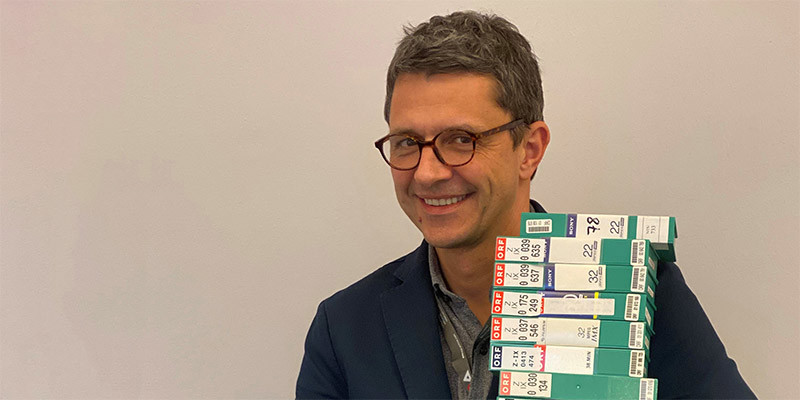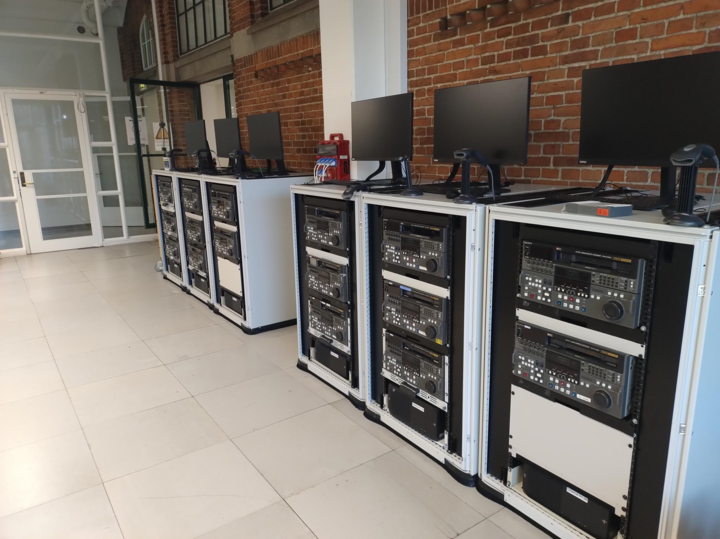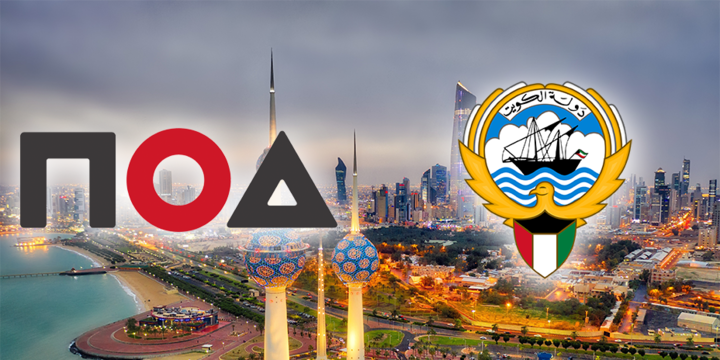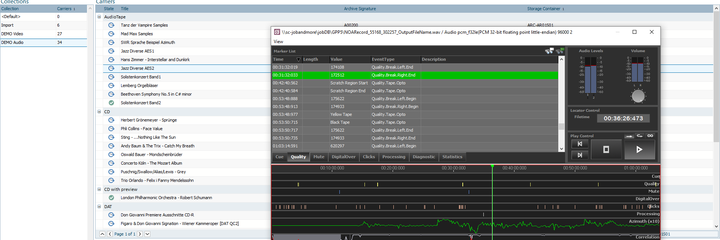Digitization and the Threat to Audiovisual Collections
At that particular conference we showcased our enhanced product offerings that meet the increasing industrial digitization requirements of legacy audio and video carriers. On the topic of the potential loss of so many hours of historical content, we shared our commitment to resolving this issue by outlining NOA’s technology that is designed to simplify the digitization process of audiovisual archives.Every country around the world has to deal with this potential loss that concerns all of us. We were glad, for example, to learn that the preservation of legacy material has become a strong interest point for many broadcasters in the MEASA region and around the world. But that has not always been the case.
In Saudi Arabia, radio broadcasts started in the Jidda-Mecca area in 1948, but they did not start in the central or eastern provinces until the 1960s. Neighboring Bahrain had radio by 1955, but Qatar, Abu Dhabi, and Oman did not start indigenous radio broadcasting until nearly a quarter century later. Indigenous television broadcasting in the Arab world first began during the late 1950s, in Iraq and Lebanon. Thirteen other Arab countries followed during the 1960s, but it was not until 1975, when North Yemen inaugurated its television station, that all Arab states had television.
As a step in the right direction, Sharjah Media Corp., in the United Arab Emirates, ordered a second Archive Asset Management (AAM) mediARC™ system from us in February to upgrade its disaster recovery plan to ensure the preservation of its archive now and in the future.
But more work needs to be done. Many point to an alarming 95% of the world’s archives that could disappear — simply because of lack of replayers. Most countries around the world are confronted with this issue, which is particularly acute in Arabic countries. In the UAE alone, estimations rise between a total of 1 to 2 million hours of material from various broadcasters that could be lost.
AV Archivists Are Not Obsolete
With industrial digitization being an increasingly important theme, NOA spoke to the audience at the Arab States Broadcasting Union conference about the challenges of archiving and feasibility of AI in industrial digitization. Among the points we covered was the fact that many archives still lack elementary intellectual metadata before they can advance to AI technology and that AI cannot replace archivists.
The latter point is based on calculations and not on a conservative approach that simply denies the benefits of AI. Archivists play a fundamental role in preserving audiovisual collections. The work of archivists can vary — some manage the preservation of entire collections, some are librarians with a focus on digitization and cataloging, and still others are artists with a predilection for preserving history. Most archivists have learned how to work with audiovisual media and to preselect the good ones from the bad ones; their specialized world represents a small but essential percentage of the production budget, allowing for the increased efficiency of other departments. Cataloguing, creating metadata, digitizing is a set of tasks that permits content to be saved and also safely used and quickly found by producers. AV archivists are therefore not obsolete and cannot be forgotten, as they are a vital part of the production workflow.
Spreading the Word and Systematic Digitization
In 2019 we did not miss a beat and we were also present at Broadcast Asia in Singapore and IBC in Amsterdam. At IBC we spotlighted our enhanced product lineup and powerful solutions that meet the increasingly demanding requirements of legacy-audio and video-carrier industrial digitization.
In March, Lugano-based Swiss National Sound Archives, Fonoteca Svizzera revamped its archiving gear with NOA solutions to safeguard the country’s audio heritage. Also this year we streamlined the digitization process for Hungary’s MTVA, provided new gear for the systematic digitization of Moravian Library Brno’s legacy media archive, and enhanced the central archiving process for Radio Televizija Srbije.
We are grateful for the trust the industry puts in NOA solutions and we consider it our mission to help preserve audiovisual content for future generations. At this time of the year we are reminded of the incessant tick of the clock, as fall turns into winter and with spring on the horizon. Nothing can escape this certainty — not even important audiovisual collections! These collections carry our history forward and connect us to the future. Time has become one of the biggest threats to audiovisual repertoires and it’s urgent that we do something about it now.
Audiovisual collections age and degrade over time. The material deteriorates if it hasn’t been stored in ideal conditions and can become inaccessible if it’s not captured in digital format. Furthermore, most audiovisual content requires proprietary players which simply are not existing anymore.
A typical approach driven by production needs would simply ensure, for instance, that a tape gets recorded and transferred to a MAM system. This thematic choice only targets a specific audiovisual content and provides no level of quality control or content improvement. Furthermore a content-targeted approach tends to exclude a lot of the unknown yet precious material, thus allowing typically 1–2% of the archives to be saved.
A more advanced systematic approach on the other hand focuses on a longer-term investment by allowing quality to play a key role in different levels of digitization. Think of transfer quality, wrapper quality, process quality, etc. An in-house systematic digitization approach may handle 60,000 tapes a year vs.600 tapes a year executed by a production-driven strategy. A systematic approach can therefore play a significant role in saving a large quantity of archives and in reducing costs because the different layers of quality within the process build a bigger and safer audiovisual repertoire (no need to digitize twice) that is well catalogued and ready for producers to use.
This is where the job of an archivist comes into play. Even though this niche vocation generally represents just a small percentage of a production budget, it’s an essential part for any media house, archive or institution worldwide. It can also improve the competence of other departments. In-house industrial digitization is the way forward and it helps archivists and production/news department work faster, and this efficiency enables cost savings.
There are obstacles ahead but the possibilities are vast. Many archives still struggle with providing access to their legacy content and with developing a long-term digital preservation strategy. While challenging on its own, mass migration of physical collections to the digital domain is only the first big step; it takes more to build a state of the art media repository. Organizing and describing the sounds and images within the archive is a vital prerequisite, as is storage and management.
For the last 30 years production formats have ruled the archive formats, simply because the archive has been considered as a physical drop off location of content. Today with the obsolescence of VTRs, and different file formats available, the need to look forward into an eternity plus one day vision is crucial.
NOA is here to help media institutions worldwide protect their treasures through an efficient approach. NOA has recently launched a mediARC user forum to support AV archivists and create interaction with its growing audience that has embraced in-house industrial digitization. We all need to be aware of the importance of this task and work together to ensure the world’s cultural heritage is preserved. We need to remember that archives are being lost and do something about it.
Whether it’s to preserve something that is culturally and historically valuable, or whether it’s to unlock the monetary value in archive assets, NOA’s industrial archive digitization solutions and its open-source format approach (ffv1) are already contributing to the preservation of audiovisual archives by making the process easier, more affordable and ultimately by adding to customers’ operational efficiency and cost-saving strategy.
We continue to strive to offer a quality approach to this problem because for NOA it’s vital that institutions around the world can successfully transfer material, knowledge and history to future generations.
From the past, through to the present and toward the future, we all have an obligation to safeguard our heritage.



